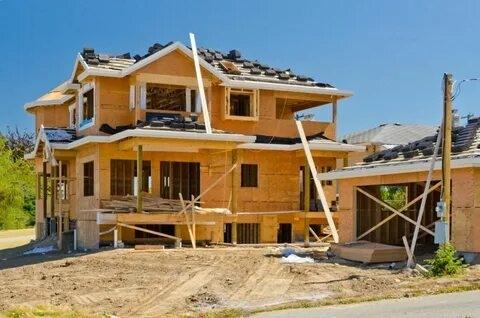How Green Building Practices Drive Long-Term Business Success

In modern years, sustainability has become out to be a vital awareness in the global enterprise. Companies of all sizes are rethinking how their homes are designed, constructed, and operated. What was once regarded as a gap concept is now a mainstream technique that supports both environmental responsibility and long-term profitability. As purchaser expectations evolve and global demand situations come to be more urgent, companies know that green production plays an important role in building a successful destiny. At the heart of this movement are Green Building Practices, a technique focused on decreasing environmental impact through efficient substances, smart technologies, and cleaner indoor environments. These strategies are reshaping not just the development area but also how companies control their operational expenses, worker well-being, and prolonged-time period economic balance. By adopting sustainable advent techniques, companies position themselves for higher normal overall performance and more potent resilience in a competitive market.
1. Why Sustainability Matters More Than Ever
One of the most essential reasons sustainability has won so much traction is due to the reality that the world has become more aware of the environmental toll of conventional production. Consumers now anticipate businesses to make eco-aware selections, and plenty of actively pick out manufacturers that exhibit environmental responsibility. At the same time, international governments are enforcing guidelines and guidelines that push organizations on the route of greener construction standards. This twin strain—from purchasers and policymakers—creates an environment in which sustainable construction is no longer obligatory. Businesses that act early gain a powerful, aggressive edge, enjoying a progressive logo reputation, patrons believe, and long-term credibility.
2. Reducing Operational Costs Through Energy Efficiency
One of the clearest benefits of sustainable construction is the capacity to decrease operating costs. Energy-green materials, clever HVAC systems, solar electricity answers, and superior insulation paint together to lessen the amount of energy a building consumes every day. Over time, these effects result in significant monetary savings on strength and heating bills. Many agencies are pleasantly surprised by way of how quickly these upgrades pay for themselves. Whether it’s automated lighting fixtures structures that flip off when a room is empty or windows designed to optimise natural mild, power-efficient solutions help businesses lessen waste and keemoreer in their profits.
3. Higher Market Value and Stronger Investment Appeal
Eco-friendly homes frequently have a higher market fee in comparison to older structures that lack sustainable features. Buyers and tenants are more and more looking for areas that provide long-term financial savings, comfort, and decreased environmental This expanded call certainly boosts the market fee. Investors additionally opt for sustainable homes because they are seen as dependable, destiny-proof belongings. By proudly owning or leasing in such areas, enterprises advantage from better occupancy fees, elevated long-term costs, and a more potent function in the real property market.
4. Healthier Indoor Environments Boost Productivity
Sustainable creation isn’t pretty much saving energy or decreasing costs—it also improves the fitness and comfort of the people who use the building every day. Green buildings generally use materials which can be free from toxic chemicals and make use of structures that enhance indoor air exceptional. Better air flow, purifier air, and herbal lighting fixtures all make contributions to a more fit place of business. When personnel feel comfortable and healthy, they clearly become extra engaged and effective. Reduced unwell days, stepped forward attention, and higher morale all add up to an extra efficient and inspired group of workers. These advantages make contributions without delay to an agency’s normal overall performance and success.
5. Resource Management and Future Risk Reduction
Another foremost advantage of sustainable building techniques is long-term resource stability. As power charges vary and global assets become greater unpredictable, corporations must plan with the future in mind. Sustainable houses frequently consist of functions that include water recycling systems, solar panels, and strong materials that last longer and require much less maintenance. These strategies help organizations in avoiding dangers associated with growing charges, resource shortages, and new environmental challenges. By making ready earlier, groups defend themselves from unexpected challenges and ensure smoother operations.
6. Strengthening Reputation and Customer Loyalty
In today’s marketplace, an employer’s popularity carries big weight. Customers want to assist brands that align with their values, and sustainability is now one of the maximum essential. When a business invests in an inexperienced introduction, it sends a strong and brilliant message about its long-term willpower to the planet, its personnel, and its network. A sturdy popularity draws customers, strengthens loyalty, and opens the door to new partnerships and collaborations. These benefits are vital for accomplishing Long-Term Business Success, as they assist in building relationships that preserve growth and stability over many years.
7. Technology’s Role in Advancing Green Construction
Innovative technologies are gaining an increasingly more important position in making green advent smarter and more effective. Tools that include computerised lighting controls, AI-powered power monitoring systems, water-saving sensors, and clever thermostats permit agencies to optimise their operations with minimal effort. These technologies help in lessening waste, improving performance, and creating an extra recycling-friendly environment. New recycling companies that embody innovation will enjoy even greater benefits, putting themselves apart from the competition.
8. Financial Benefits That Grow Over Time
Although some sustainable capabilities may also require a slightly higher funding to begin with, the long-term financial rewards some distance outweigh the upfront costs. Lower software bills, decreased upkeep fees, and improved employee performance all contribute to widespread lengthy-time period savings. Businesses that take a protracted-time period view of their homes gain greater fee, greater stability, and greater growth opportunities. Instead of thinking about advent expenses as a one-time fee, corporations can treat sustainable construction as a future investment—one which continues to pay off year after year.
Conclusion: A Smarter Path to a Sustainable Future
Green introduction is more than in reality an environmental trend—it's a strategic company circulate that helps increase, balance, and achieve long-lasting success. By adopting eco-friendly building strategies, companies create healthier offices, lessen monetary costs, boost their brand, and construct a destiny-proof basis for continued progress. As the sector keeps changing, companies that embody sustainable creation today can be the ones leading tomorrow. Choosing to build responsibly isn't always the simplest right for the environment—it’s one of the most powerful methods a commercial enterprise can put together for a successful and resilient future.




